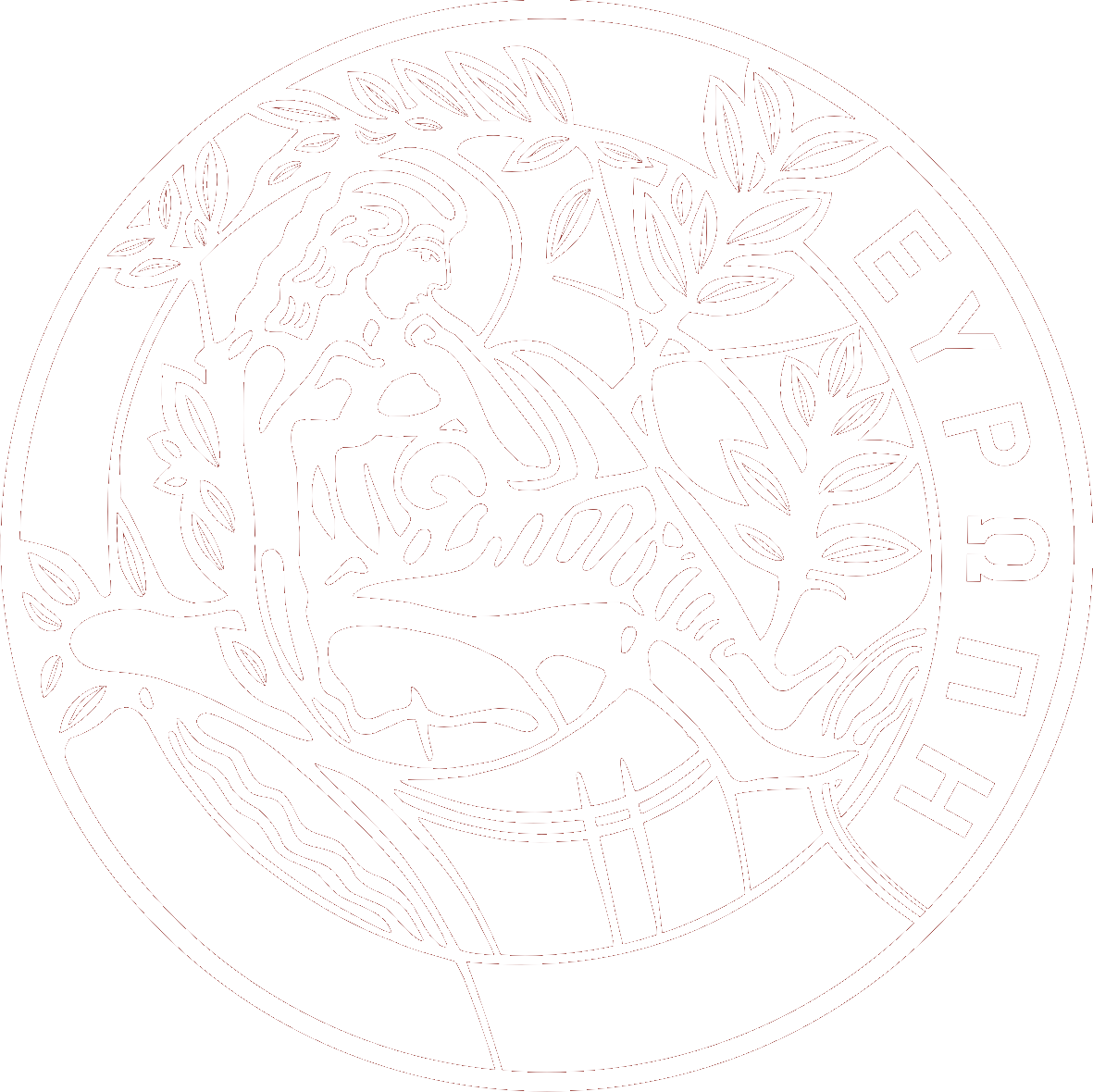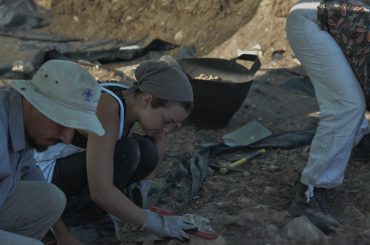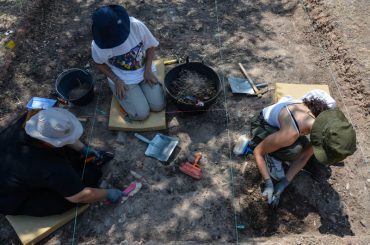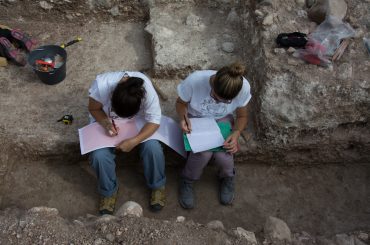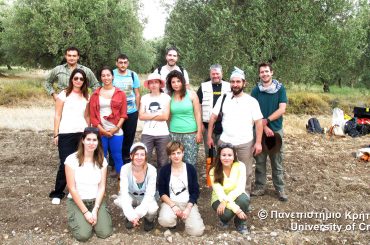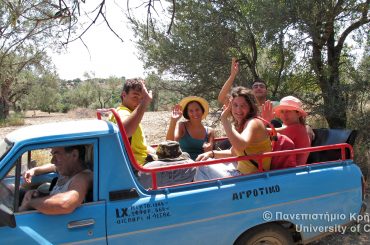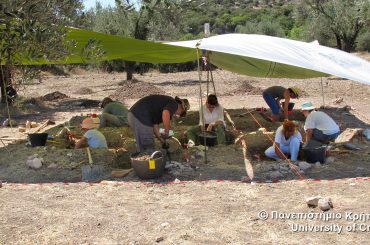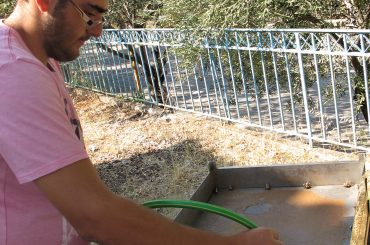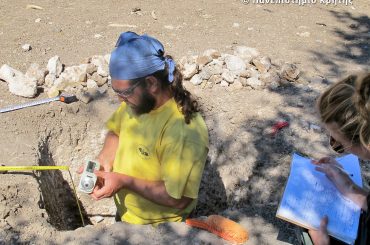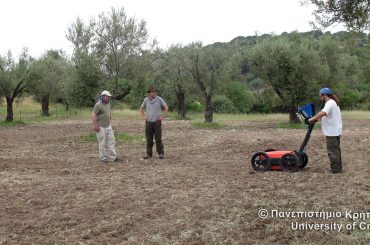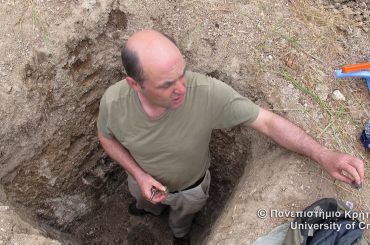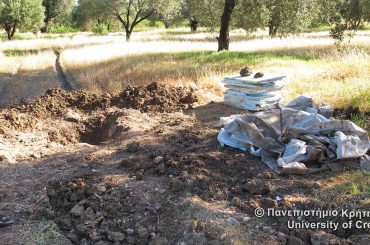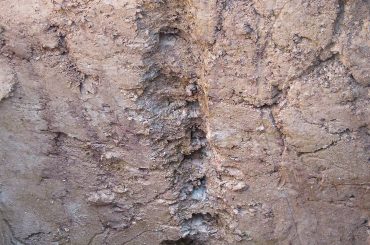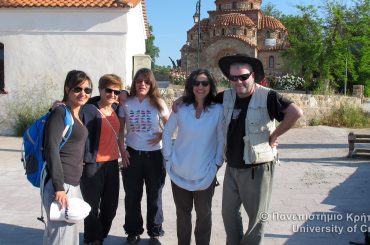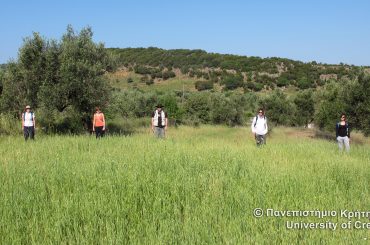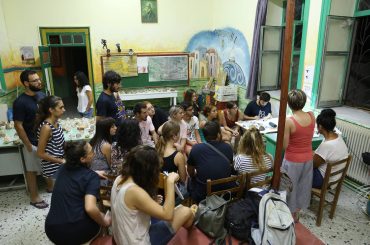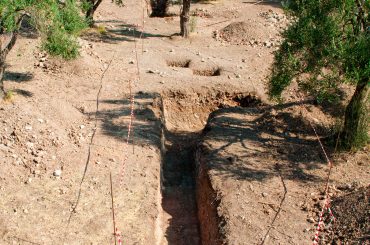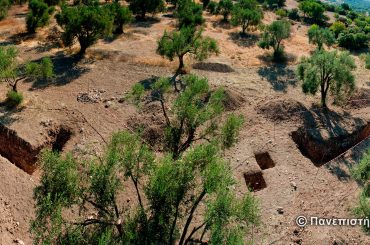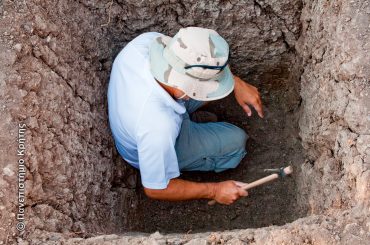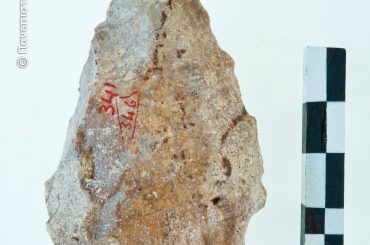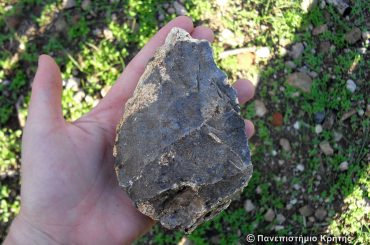Palaeolithic Lesbos (excavation, surface survey and geophysical research) (2012-)
Rodafnidia at Lisvori on Lesvos is an open-air Paleolithic site that is being systematically excavated (2012-16) by the University of Crete and an international work team under the supervision of Nena Galanidou. The site extends over a low hill delimited by two streams that flow into the Gulf of Kalloni. It has produced numerous stone tools that span the Lower and the Middle Palaeolithic. A large component of the lithic assemblage consists of Acheulean artifacts, dated, on the basis of technology, to the Middle Pleistocene (780,000 – 125,000 BP). The lithic industry derives from fluvio-lacustrine deposits, in a landscape sculpted by volcanic activity, where high quality lithic raw materials are abundant. The excavation sheds light on an unknown aspect of the early prehistory of the island and the NE Mediterranean, as it unveils the first large-scale Acheulean site in Greece. The finds connect the early archaeology of Greece to global research on Human Origins and Evolution, and the hominin expansion ‘Out of Africa’ and ‘Out of Asia’ into Europe and vice versa.
Who were the earliest occupants of Rodafnidia? Were they just one or more species? Were they Homo erectus, Homo heidelbergensis or another species? This remains unknown. It should, however, be noted that both these species knapped and used handaxes, tools that our excavation has uncovered in great numbers and that are found at Early Paleolithic sites in Europe, Asia and Africa. It is worth adding that, while a few sites in mainland Greece and on Lefkas have produced bifaces, nowhere are they found over such a wide area and in such quantities as at Rodafnidia. The most interesting finds are cleavers and cleaver flakes, the African component of the industry, the first finds of this kind in Greece, showing that the hominins on Lesvos were part of a common cultural tradition that spreads from Europe to India, but is mostly found in Africa. Thus Rodafnidia is instrumental to the understanding of movements and adaptations of our ancestral species at the easternmost edge of Europe, which simultaneously forms the western frontier of Asia.
The working hypothesis that we are investigating is whether and, if so, when during the glacial periods of the Middle Pleistocene and the Upper Pleistocene, the basin of today’s Gulf of Kalloni turned into a great lake that attracted animals and early humans. The quantity and density of finds illustrates that hominin groups often returned and dwelled on its fringes. They arrived on Lesvos by walking over a land bridge on the eastern side of the island (Asia is only 20 km away today across the strait of Mytilene) during glacial periods, when ocean water was locked in glaciers and the sea level fell. By studying bathymetric maps of this strait, we know that a 60m drop in sea level would be enough to connect Lesvos to Western Asia. Taking the study of hominin responses to landscape and coastline changes as a starting-point, the investigation of the area around Rodafnidia provides us with a window onto the ancient history of climate change. In order to place hominin activity at Rodafnidia on a temporal scale, sediment samples from the excavated strata have been taken for laboratory analyses and dating by means of Optically Stimulated Luminescence, Paleomagnetism and TCN.
The team is staffed by experts in the fields of archaeology and the geosciences: Dr Giorgos Iliopoulos, Lecturer in Geology – Paleontology at the University of Patras; Dr Geoffrey King, Director of Geological Research at the CNRS, France; Dr John MacNabb, Senior Lecturer of Archaeology at the University of Southampton, UK; Andreas Magganas and Athanasios Katerinopoulos, Professors of Geology – Mineralogy and Petrology at the University of Athens; Chronis Tzedakis, Professor of Geography at the University College London, UK; Dr James Cole, Lecturer at the University of Oxford, UK; and Dr Katerina Vasileiadou, researcher at the Natural History Museum of the Petrified Forest at Sigri, Lesvos. During the course of the excavation, a group of undergraduate and postgraduate students from the Universities of Crete and Leuven were trained in archaeological field methods.
Our research findings have been presented at the international symposium on Human Evolution in the Southern Balkans held at the University of Tuebingen (December 2012) and will be presented at the European Palaeolithic Conference at the British Museum (February 2013).
The research is co-funded by the University of Crete, the Secretariat General for the Aegean and Island Policy of the Ministry of Maritime Affairs, Islands and Fisheries, and the Region of the North Aegean. We were also provided with scientific and material support by the 20th Εphorate of Prehistoric and Classical Antiquities, and with technical support and accommodation by the Municipality of Lesvos and the Local Council of Lisvori.
References
2016, Nena Galanidou, Constantin Athanassas , James Cole, Giorgos Iliopoulos, Athanasios Katerinopoulos, Andreas Magganas & John McNabb, The Acheulian Site at Rodafnidia, Lisvori, on Lesbos, Greece: 2010–2012, in Paleoanthropology of the Balkans and Anatolia | Human Evolution and its Context, K. Harvati & M. Roksandic (eds.), Springer, Dordrecht, 119-138.
2013, Nena Galanidou, James Cole, Giorgos Iliopoulos & John McNabb, East meets West: the Middle Pleistocene site of Rodafnidia on Lesvos, Greece, Antiquity, Volume 087, Issue 336, June.
2013, Looking for the earliest occupants of the Aegean – Paleolithic excavations at Rodafnidia, Lisvori, Lesvos, in Island Identities. The contribution of the Secretariat General for the Aegean & Island Policy to the Research and Promotion of the Culture of the Aegean Archipelago, Μ. Alvanou (ed.), Mytilene, 15-17.
